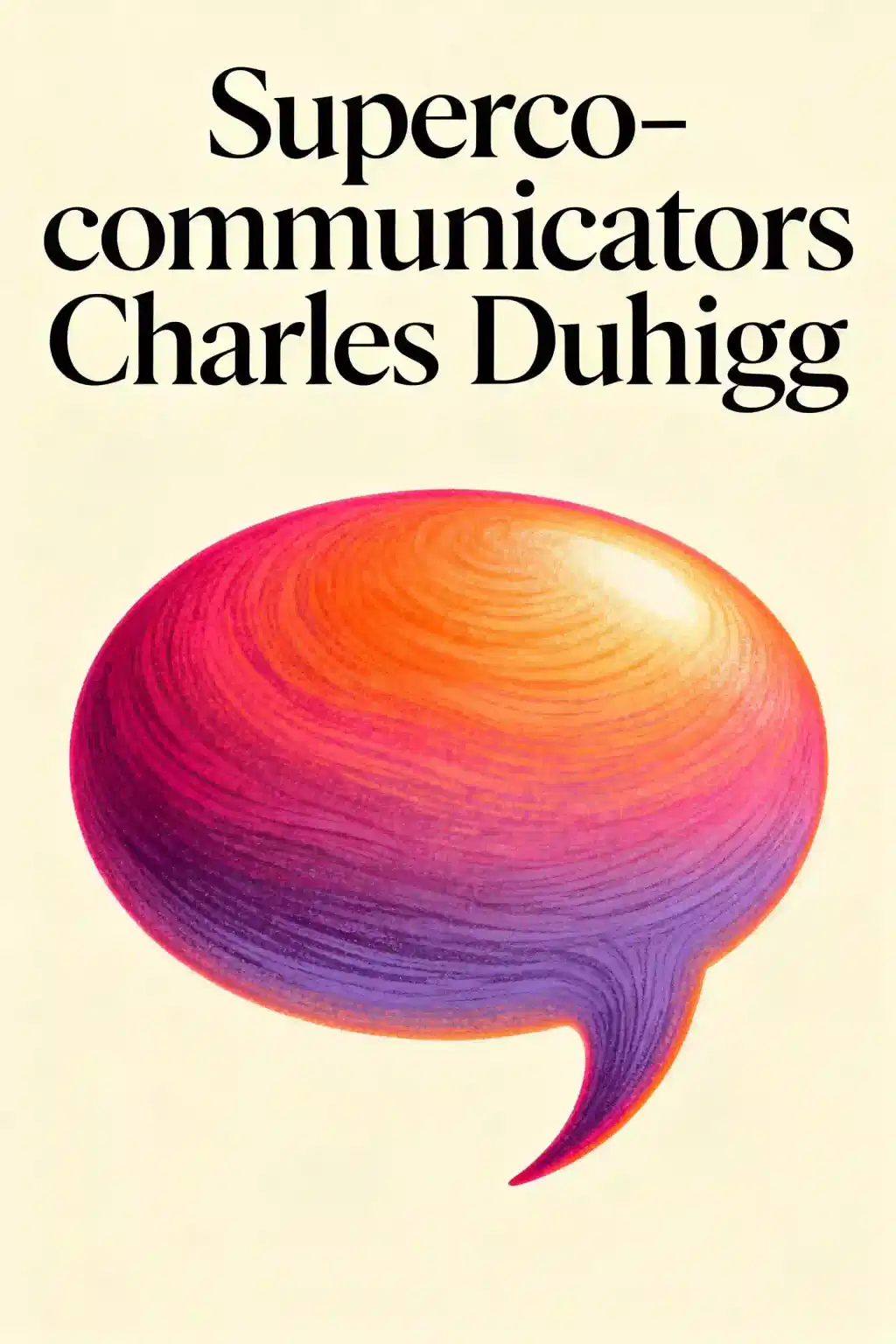What is
Supercommunicators by Charles Duhigg about?
Supercommunicators explores how to master meaningful connections by recognizing three conversation types: practical (What’s this really about?), emotional (How do we feel?), and social (Who are we?). Charles Duhigg argues that aligning these dialogues—through active listening, asking probing questions, and matching emotional tones—builds deeper relationships. The book blends neuroscience, case studies (e.g., CIA recruitments, Netflix meetings), and actionable strategies for effective communication.
Who should read
Supercommunicators?
This book is ideal for professionals, leaders, educators, and anyone seeking to enhance personal or workplace communication. It’s particularly valuable for those navigating negotiations, team dynamics, or relationship-building. Duhigg’s science-backed framework also appeals to psychology enthusiasts and readers of his prior bestsellers like The Power of Habit.
Is
Supercommunicators worth reading?
Yes—Supercommunicators offers evidence-based tools to transform how you connect. Duhigg combines academic research (e.g., neural entrainment) with relatable stories, making complex concepts accessible. Readers gain practical skills, like identifying hidden conversation goals and reframing discussions to foster empathy. It’s a actionable guide for improving both professional and personal interactions.
What is the “matching principle” in
Supercommunicators?
The matching principle involves aligning your communication style with the conversation type. For example, if someone shares emotions (How do we feel?), respond with empathy rather than practical solutions. Duhigg emphasizes listening for verbal/nonverbal cues, asking open-ended questions, and mirroring moods to achieve “neural synchronization,” where brains align during meaningful exchanges.
How does
Supercommunicators explain neural entrainment?
Neural entrainment refers to brain synchronization during successful communication. When supercommunicators match conversation types, they trigger a reward response—similar to social bonding mechanisms that aided human survival. This synchronization, detectable via neuroimaging, makes interactions feel effortless and fosters mutual understanding.
What are the three conversation types in
Supercommunicators?
- Practical: Focuses on problem-solving (e.g., “How can we improve Sam’s grades?”).
- Emotional: Centers on feelings (e.g., “I’m overwhelmed by work”).
- Social: Explores identities and relationships (e.g., “What does this decision say about us?”).
Misalignment between types leads to disconnect, while matching deepens connection.
Can
Supercommunicators improve workplace communication?
Absolutely. The book provides strategies for clarifying meeting goals (practical), addressing team morale (emotional), and aligning decisions with company values (social). For example, Duhigg highlights how Netflix used these principles to navigate equity discussions, fostering collaboration and reducing conflict.
How does
Supercommunicators compare to
Crucial Conversations?
While both address effective communication, Supercommunicators emphasizes neuroscience and conversation categorization, whereas Crucial Conversations focuses on managing high-stakes conflicts. Duhigg’s approach is more tactical for everyday interactions, while 后者 prioritizes resolving disagreements.
What are key quotes from
Supercommunicators?
- “Effective communication requires recognizing what kind of conversation is occurring, and then matching each other.”
- “Connection is felt deep within the body.”
- “Every discussion is made up of multiple different kinds of conversations.”
These lines underscore the book’s focus on intentional dialogue.
Are there criticisms of
Supercommunicators?
Some may find the three-conversation framework oversimplified, or argue that matching conversations requires innate social skills. However, Duhigg counters with actionable steps (e.g., the “learning conversation” rules) to systematize connection, making it accessible even to less-experienced communicators.
Why is
Supercommunicators relevant in 2025?
In an era of remote work and AI-driven communication, human connection remains irreplaceable. The book’s emphasis on empathy, active listening, and identity negotiation addresses modern challenges like digital miscommunication and workplace diversity, offering timeless tools for bridging divides.
How does
Supercommunicators build on Charles Duhigg’s previous work?
Like The Power of Habit, Supercommunicators translates scientific research into practical habits. While the former focused on behavior change, this book targets interpersonal dynamics, cementing Duhigg’s niche in making complex psychology accessible to mainstream audiences.















